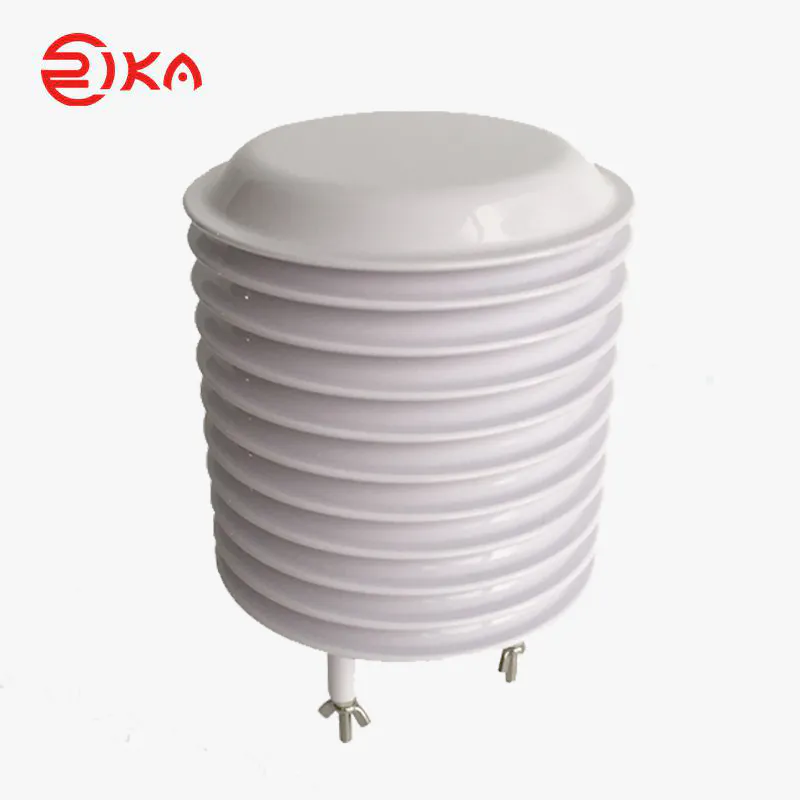In advanced manufacturing and other process-control applications, liquid level sensors play a vital role in detecting and measuring the level of liquids in tanks and other containers. There are many different types of liquid level sensors, each with its own advantages and disadvantages. In this guide, we will provide an overview of the most common types of liquid level sensors, their working principles, and their typical applications.
liquid level sensor are used in a wide variety of industries, from food and beverage processing to chemical manufacturing. In many cases, the choice of sensor type will be dictated by the properties of the liquid being measured, the size and shape of the tank, and the required accuracy and precision of the measurement. Other important considerations include the sensor's response time, its sensitivity to changes in temperature and pressure, and its compatability with the materials of the tank or container.
Inductive Level Sensors
Inductive level sensors are one of the most popular types of level sensors used today. They are often used in industrial and commercial applications where liquids need to be monitored or controlled. There are many different types of inductive level sensors, each with their own unique advantages and disadvantages.
The most common type of inductive level sensor is the magnetostrictive sensor. This type of sensor uses a magnetic field to measure the level of a liquid. The advantages of magnetostrictive sensors include their accuracy, their ability to work in both clean and dirty environments, and their compatibility with most liquids. The disadvantages of magnetostrictive sensors include their high cost and their need for regular calibration.
Another type of inductive level sensor is the reed switch sensor. This type of sensor uses a magnetic field to activate a switch when the level of a liquid reaches a certain point. The advantages of reed switch sensors include their low cost, their simplicity, and their compatibility with most liquids. The disadvantages of reed switch sensors include their need for regular calibration and their lack of accuracy.
The final type of inductive level sensor is the Hall effect sensor. This type of sensor uses a magnetic field to measure the level of a liquid. The advantages of Hall effect sensors include their accuracy, their compatibility with most liquids, and their ability to work in both clean and dirty environments. The disadvantages of Hall effect sensors include their high cost and their need for regular calibration.
Capacitive Level Sensors
Capacitive level sensors are one of the most popular types of sensors used for measuring liquid levels. They work by measuring the change in capacitance between the sensor and the liquid. The main advantage of capacitive level sensors is that they are very accurate and can be used in a wide range of applications.
Capacitive level sensors can be used to measure the level of liquids in a tank or container. They can also be used to measure the level of liquid in a pipe or channel. Capacitive level sensors can be used to measure the level of a liquid in a container, or the level of liquid in a pipe.
Capacitive level sensors can be used to measure the level of a variety of different liquids, including water, oils, and chemicals. They can also be used to measure the level of a variety of different solid materials, including powders and granules.
Capacitive level sensors are available in a wide range of sizes and shapes. They can be used in a wide range of applications, including industrial, commercial, and consumer applications.
Conductivity Level Sensors
Conductivity level sensors are used to measure the level of conductivity in a given medium. In general, these sensors work by measuring the conductivity of the medium and then using that information to determine the level of the conductivity. There are a variety of different types of conductivity sensors, each of which has its own advantages and disadvantages.
One type of conductivity sensor is the electrode sensor. This type of sensor uses electrodes to measure the conductivity of the medium. The electrodes are typically made of metals such as silver or copper. The main advantage of using electrode sensors is that they are relatively small and can be easily installed in a variety of locations. Additionally, electrode sensors are generally very accurate. However, a downside of electrode sensors is that they can be adversely affected by the presence of other conducting materials, such as metals or salts.
Another type of conductivity sensor is the inductive sensor. This type of sensor uses an induction coil to measure the conductivity of the medium. The main advantage of inductive sensors is that they are not affected by the presence of other conducting materials. Additionally, inductive sensors are relatively insensitive to changes in temperature. However, a downside of inductive sensors is that they are generally larger than electrode sensors.
ultrasonic sensor is another type of conductivity sensor. This type of sensor uses ultrasonic waves to measure the conductivity of the medium. The main advantage of ultrasonic sensors is that they are not affected by the presence of other conducting materials. Additionally, ultrasonic sensors are relatively insensitive to changes in temperature. However, a downside of ultrasonic sensors is that they can be adversely affected by the presence of D conductive materials, such as metals or salts.
Conductivity sensors are an important tool for measuring the level of conductivity in a given medium. There are a variety of different types of conductivity sensors, each of which has its own advantages and disadvantages. Ultimately, the type of sensor that is best for a given application will depend on the specific requirements of the application.
Ultrasonic Level Sensors
Ultrasonic level sensors are one of the most popular types of sensors used for measuring liquid levels. Ultrasonic sensors emit sound waves that travel through the air and reflect off of the surface of the liquid. The sensor then measures the time it takes for the sound waves to bounce back and uses this information to calculate the level of the liquid.
Ultrasonic sensors are very accurate and can be used to measure the level of a wide variety of liquids, including water, oil, and chemicals. They are also relatively easy to install and can be used in a wide variety of applications.
There are a few downsides to ultrasonic sensors. One is that they can be affected by environmental factors, such as temperature and humidity. Additionally, they can be damaged by Sonic booms, so they are not ideal for use in areas where these are common.
Magnetostrictive Level Sensors
Magnetostrictive level sensors use the magnetostrictive properties of certain materials to measure liquid level. These sensors contain a magnet that is allowed to float freely inside a tube filled with the liquid being measured. As the liquid level changes, the position of the magnet changes, which changes the magnetic flux through the tube. This change in magnetic flux is used to determine the liquid level.
Magnetostrictive level sensors have a number of advantages over other types of sensors. They are highly accurate and repeatable, and they are not affected by changes in density or viscosity. They are also relatively insensitive to changes in temperature. However, magnetostrictive level sensors are more expensive than other types of sensors, and they require a magnetically permeable material in order to work properly.
There are many different types of liquid level sensors available on the market today. This guide has provided an overview of the most common sensor types, their advantages and disadvantages, and the applications they are best suited for. When choosing a liquid level sensor for a particular application, it is important to consider the sensor's accuracy, range, resolution, and sensitivity. With so many different types of sensors available, there is sure to be a sensor that meets the requirements of any given application.


No comments yet